
VVEDENSKY Boris Sergeevich, Candidate of Physical and Mathematical Sciences
REVIEW OF FOREIGN QUICKLY DEPLOYABLE COMPLEXES FOR PERIMETER SECURITY
Perimeter security alarm systems are the first technical line of defense of an object; the reliability and efficiency of this line are very important for early detection of an intruder.
Modern developments of leading foreign companies are characterized by some general trends in the development of security equipment:
1. The use of new cost-effective electronic components reduces the energy consumption of sensors. This allows the creation of systems with autonomous power supply that do not require the use of power cables.
2. The use of miniature radio transmitters of alarm signals built into security sensors allows you to avoid laying alarm cables and create wireless perimeter security systems.
3. The use of the latest digital signal processing methods leads to the emergence of “intelligent” sensors with such functions as recognizing typical intrusion signals, localizing an intruder within a security zone, remote diagnostics and sensor configuration, etc.
4. Much attention is paid to the development of quickly deployable systems, often used to protect the perimeters of temporary field facilities. Miniature sensors of such systems are often adapted for hidden installation on the perimeter.
In previous reviews [1 – 3], perimeter security systems operating on various physical principles (radio beam, radio wave, infrared, vibration, capacitive, seismic, etc.) were described.
Therefore, in this article we will focus only on some quickly deployable security systems, the characteristic features of which are the autonomy of the sensor power supply, the use of a radio channel for transmitting alarm signals and diagnostics, the compactness of the sensors and the possibility of ensuring their hidden installation.
Rapidly deployable systems use various types of sensors – microwave, passive infrared, vibration, capacitive and a number of others.
Therefore, all rapid deployment systems are divided into classes depending on the type of sensors used.
A whole series of autonomous various rapid deployment systems for protecting field facilities is manufactured by Sensor Electronic Limited (Great Britain).
All manufactured systems use passive infrared sensors with a “curtain” configuration of the sensitive zone.
One of the most well-known systems is called AutoGuard. The sensor of such a system (photo 1) is made in a shockproof polystyrene case, providing sealing according to IP66 standards. A miniature radio transmitter of alarm signals operating at a frequency of 174 MHz is built into the sensor case.
The transmitter power is about 10 mW; it turns on only for 1 — 2 seconds when an alarm signal appears, so the average power consumption of the sensor is very low.
The IR sensor itself consumes about 5 μA, which, when using two built-in 3.6 V lithium batteries, ensures the sensor operates for several years.
Photo 1. IR sensor of the Autogard wireless security system
The sensor sensitivity zone is 30 m long; the width of the zone at the maximum distance from the sensor is about 2 m.
The sensors are equipped with bushings for mounting on screw brackets. Using strap ties, the sensors can also be installed on fence elements, trees, etc.
Alarm signals from the sensors are sent to the 8-zone control panel (photo 2).
The panel has sound and light indication of alarm in security zones; there is also a LED indicating the low battery of the sensors.
The alarm receiver, when working with a built-in antenna, provides a radio channel length of up to 1.5 km in open space and 300 m in built-up areas.
To increase the reliability of the radio channel, you can also use an external antenna or a special antenna amplifier.
In addition to the network power source, the panel is equipped with a built-in battery that ensures the panel's operability for 36 hours.
The control panel contains individual alarm output relays for each of the eight security zones.
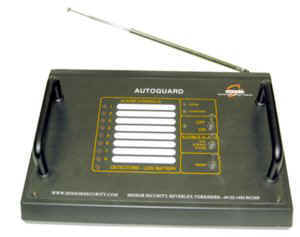
Photo 2. Autogard system control panel
The Autogard system configuration can be changed depending on the parameters of the facility.
In the basic version, the system consists of a control panel and eight sensors; this set fits in a special transport case for ease of transportation.
The basic kit can protect a perimeter with a total length of up to 240 meters.
To protect longer perimeters, additional sensors can be connected to the control panel — up to 10 sensors to each of the panel zones.
Thus, a perimeter of more than 2 km can be protected from one control panel.
The StealthGuard security system by Sensor Electronic Limiteddiffers from the Autoguard system by its control panel, which is available in a portable version (photo 3).
The system is similar to the Autoguard kit in terms of sensor parameters and expansion capabilities. The control panel of the StealthGuard system is structurally designed as a compact unit with an autonomous power supply.
The panel is intended for outdoor use, its body is sealed according to IP66 standards.
The panel has light and sound alarm indication modes. The StealthGuard control panel does not have alarm output relays, but it can be connected to the central security station via radio using an additional communicator.
The folded StealthGuard kit fits into a shockproof suitcase measuring 43x34x11 cm.

Photo 3. Control panel and sensors of the wireless StelthGuard system
Various passive IR sensors for perimeter protection are manufactured by Arkonia (Great Britain).
As an example, photo 4 shows passive IR sensors of the ARK9130 series, designed for use in difficult atmospheric conditions.
The sensors are made in rigid metal housings, sealed according to IP67 standards.
The pyroelectric receivers of the ARK9130 series sensors contain sensitive elements made of lithium tantalate.
The precision lenses are made not of polymer, which is typical for most passive IR sensors, but of germanium.
The top of the 4 sensors shown in the photo, the ARK9133, allows you to detect a person at a distance of at least 100 m.
The length of the sensor is 173 mm, the maximum diameter is 49 mm.
The angular width of the sensor's sensitive zone is 4 degrees.
The lower sensor shown in photo 4 (type ARK9135) has a range of 15 m; its sensitive zone has an angular width of about 30 degrees.
In this situation, this sensor is used to cover the “dead zone” of the upper sensor.
The length of the ARK9135 sensor is 98 mm, the maximum diameter is 25 mm.
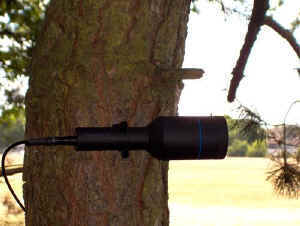
Photo 4. Passive IR sensors of the ARK9130 series
by Arkonia (UK)
The ARK9130 series devices are designed in accordance with the requirements of the UK Ministry of Defence and are used, in particular, to protect temporary aircraft parking lots.
The ARK9130 series sensors are distinguished by very low power consumption (140 μA at a voltage of 5 … 16 V).
This allows the sensor to be combined with a portable radio transmitter of alarm signals and used as a wireless security device, which can be effectively disguised if necessary.
A specific feature of the sensor is the ability to determine the direction of movement of an intruder using a differential circuit of the pyro receiver.
The differential receiver also allows for automatic adjustment of the response threshold, as well as compensation for interference from rain, hail, fog and other adverse external influences.
The sensors are immune to radio frequency radiation of up to 50 V/m in the frequency range from 10 kHz to 18 GHz and remain operational when exposed to sunlight.
The ARK9130 series sensors are available in two versions — with relay outputs and with an RS485 interface.
In both versions, the sensors allow viewing the last ten alarm events, testing, and remote sensitivity adjustment.
ARK9133 type sensors are used in the Hornet kit, consisting of a passive IR sensor and a portable radar sensor (photo 5).
In the ARK9101 kit, the IR sensor is mounted on the radar body; it is used to turn on the radar if a foreign object enters the field of view of the thermal sensor.
The IR sensor detects an intruder at distances of up to 100 m; the sensitivity zone of the radar sensor has an angular width of the sensitivity zone of about 45 degrees.
The radar signal is analyzed by a built-in microprocessor, which allows recognizing typical images of an intruder using the Fast Fourier Transform (FFT) algorithm.
After the radar information is processed, alarm signals are transmitted to the control post using a built-in radio transmitter.
The alarm signal also contains the results of processing the sensor signals (“person”, “car”, “movement from right to left”, etc.).
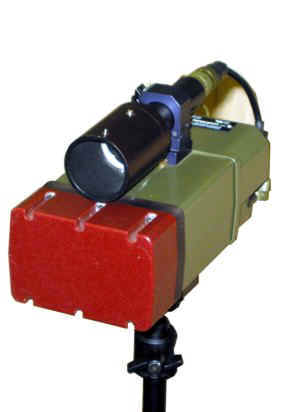
Photo 5. ARK9130 IR sensor combined with a radar sensor (Arkonia, UK)
A modification of such a dual sensor, called ARK9102, differs in that instead of a radio transmitter of alarm signals, a transceiver is installed here.
It allows the radar sensor to be activated also by signals from remote sensors (passive IR, geophone, magnetic, etc.).
The configuration program supplied with the sensor runs on a PC platform and allows you to set all the necessary operating parameters of the system.
The ARK9104 version does not have an alarm signal transmitter; here, a relay that controls the connected actuator is used to transmit alarm signals.
Instead of an alarm transmitter, a receiver is installed here, which receives control signals from external sensors with a radio channel.
In all versions, the kit is powered by built-in lithium-ion batteries or external accumulators.
The radars operate in the J-band, the radar output power is 8 mW. The alarm transmitter (transceiver) uses FSK modulation at a flow rate of 1200 baud. The power of the alarm transmitter is 1 … 3 W.
The voltage of the built-in batteries is 12 V; the supply current in standby mode is 0.7 mA, in active mode — 500 mA.
The system complies with the requirements of British military standards in terms of electromagnetic interference immunity and vibration resistance.
The operating temperature range of the system is from -400 to +580 C.
The design features and “field” design allow for the effective use of the Hornet series sensorsin the most adverse climatic conditions, secretly placing them among vegetation, etc.
Combining passive IR sensors of the ARK9130 series with video cameras equipped with an autonomous power supply and a radio channel for transmitting video signals allows for a very effective solution to the problem of perimeter protection.
The components of such a quickly deployable system, called Scout, are shown in photos 6 and 7. The IR sensor of the ARK9134 type with a range of 30 m is mounted on the body of the video camera (photo 6).
The Scout combination sensor is equipped with a video signal radio transmitter and built-in power sources (8 AA batteries), which ensure the kit operates for 30 days.

Photo 6. Arkonia Scout series sensor

Photo 7. Base station for Scout series sensors
When the IR sensor is triggered, the video camera is activated and video signals along with alarm identification signals are transmitted to the base station (photo 7).
The duration of video signal transmission during an alarm is 16 seconds.
A portable LCD video monitor with a diagonal of 142 mm and a video signal recording unit are installed on the base station.
Up to six Scout type sensors are connected to the station simultaneously. The video signal accumulator provides a recording duration of up to 3 hours; all recorded signals are supplemented with identification, time and date signals.
The base station transmits received alarm signals from the sensors to pagers held by security personnel.
The metal housings of Scout sensors are rigid and hermetically sealed.
The sensors are equipped with brackets, with the help of which the devices can be installed on a flat surface or fixed directly to the ground.
The overall dimensions of the sensor (IR sensor and video camera) are 130x78x55 mm, weight — 1 kg.
The black and white video camera is equipped with a 25 mm lens and has a sensitivity of 0.1 lux.
The base station is placed in a transport case measuring 460x360x150 mm, the weight of the station is 10 kg. The station is powered by two built-in batteries with a capacity of 7.2 Ah; the station's operating time without recharging is 3 days.
The American company Southwest Microwave produces fast-deploying microwave radio beam sensors.
The PAC 300B kit (photo 8) consists of a transmitter, receiver, two autonomous battery power supplies, a radio transmitter of alarm signals, two support stands and a set of cables.
The system provides for the use of replaceable antennas, allowing you to select the optimal length of the sensitivity zone: 30 m, 107 m or 183 m.
The width of the sensitivity zone is adjusted within the range from 0.6 to 12 meters by selecting the antenna and setting the receiver sensitivity.
The receiver and transmitter units are located at a height of 45 — 81 cm above the ground.
The PAC 300B system transmitter operates at frequencies from 9.4 to 10.525 GHz (X-band) in pulse mode with a peak power of 10 mW and an average power of 5 mW.
The use of field GaAs active devices has reduced the current consumption of the receiver and transmitter to 20 mA (at 12 V) and ensured continuous operation of the kit for 190 hours from two 5 A/h batteries.
The alarm signal radio transmitter is located next to the microwave receiver unit; it provides a communication line of up to 1.6 km.
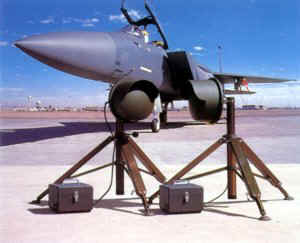
Photo 8. Rapidly deployable radio beam sensors
M.I.L. PAC 300 by Southwest Microwave (USA)
According to the developers, the PAC 300B system detects a person weighing 35 kg or more moving at full height or on all fours with a probability of 0.99 at speeds of 0.03 to 15 m/sec.
The total weight of the PAC 300B kit is 40 kg; the operating temperature range is from -400 to +660 C.
A modification of the above system, PAC 310B, differs in that it uses a frequency range of 24 GHz (K-band), which is less susceptible to interference from aircraft radars.
The maximum detection range has been increased to 457 m; the system uses an adjustable range cut-off circuit.
Simplified versions of Southwest Microwave beam microwave sensors, manufactured under the names PAC 375C and PAC 385 operate in the X-band (adjustable zone length up to 61 m) and K-band (zone length up to 122 m), respectively.
Perimeter Products, Inc. (USA) produces microwave sensors used for quickly deployable field security systems.
Modifications of the above-described TMPS-21000 series sensor (photo 9) are used here as single-position or dual-position sensors.
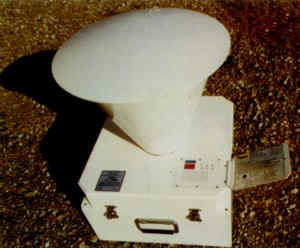
Photo 9. Microwave sensor of the TMPS-21000 series by Perimeter Products, Inc. (USA)
Two-position sensors of the TMPS-21100 type are used to organize linear boundaries around temporary parking of equipment.
The length of one security zone of such a sensor is up to 150 m; the sensors have an adjustable detection zone width and a range-cut-off mode to eliminate the influence of objects located outside the security zone.
A single-position sensor of the TMPS-21200 type is placed in the center of the security zone, for example, on the upper plane of the protected aircraft or car.
The sensor antenna forms a sensitive zone in the form of a cylinder with a radius of up to 48 m.
The operating frequency of the sensor is from 5.725 to 5.850 GHz; the range of detectable object speeds is from 0.025 to 31 m/sec.
The sensor has a built-in circuit for limiting the sensitivity radius, which eliminates false alarm signals from objects located outside the protected area.
Alarm signals are transmitted via cable or radio line.
The system includes a radar with a circular diagram and a range of up to 4 m, used to protect the near approaches to the sensor.
The sensor is powered by a built-in battery that operates without recharging for 33 hours.
In the TMPS-21300 version, the single-position sensor has a hemispherical sensitivity diagram and is designed to protect the territory of objects from air intrusions.
The radius of the sensitive hemisphere is adjustable from 22 to 78 meters.
The sensor generates an alarm signal according to a specified algorithm, reacting only to the entry into the protected area, only to the exit from it, or to both actions of the intruder.
The range of recorded object speeds is from 0.44 to 26.7 m/sec (from 1.6 to 96 km/h).
The Classic 2000 perimeter security complex (Great Britain) [4] can be classified as a universal multi-purpose quickly deployable system.
The system uses a set of hidden sensors, quickly installed on the ground surface or underground, which allow detecting and classifying moving people and vehicles.
Each sensor of the Classic 2000 system has an autonomous power supply and is structurally combined with an FM radio transmitter of alarm signals operating in the range of 148 — 155 MHz.
The receiver of alarm signals is a monitor that monitors the status of up to 99 sensors; the frequency interval between channels is 25 kHz.
Transmission is carried out using the Manchester biphase code with a flow rate of 2344 bits/s.
The Classic 2000 kit includes several types of sensors:
- multifunctional sensors, structurally combining seismic geophone sensors or piezoelectric vibration-sensitive cables and passive IR sensors;
- differential temperature sensors (passive IR sensor in combination with a seismic sensor or IR sensor in combination with a magnetic sensor);
- magnetic field sensors combined with IR sensors;
- contact sensors (pressure sensors).
All sensors are combined into groups in accordance with the configuration of security zones.
Geophone (photo 10) and piezoelectric (photo 11) sensors of the Classic 2000 system allow not only to detect, but also to classify the intruder, distinguishing three categories:
- tracked vehicle;
- wheeled vehicle;
- person.
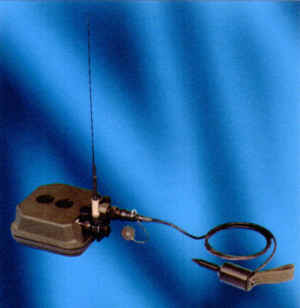
Photo 10. Geophone sensor of the Classic 2000 system (United Kingdom)

Photo 11. Piezoelectric sensor of the Classic 2000 system
The sensor of the geophone sensor is characterized by the following parameters:
Sensitivity 18.8 V/m/sec
Resonance frequency 14 Hz
Damping factor 0.18
Coil resistance 300 Ohm
Coil inductance 72 mH
Operating position Horizontal, +/-80
The distance at which the geophone sensor detects an object depends on the type and condition of the soil, as well as the air temperature.
Thus, in dry warm weather, the pedestrian detection radius is up to 25 m (with a probability of 95%), and a vehicle is detected with a probability of 80% at distances of at least 30 m.
The system allows you to determine not only the presence of objects, but also determine their number.
The dimensions of the sensor body (converter and transmitter) with batteries are 120x120x52 mm, the size of the geophone sensor itself is 100×29 (diameter) mm.
Piezoelectric cable sensors (photo 11) detect pedestrians at distances of at least 25 m, and vehicles at distances of at least 30 m.
For both sensors, the detection probability increases with an increase in the speed of the object.
The sensor body is similar in size to the geophone sensor body, the length of the piezoelectric cable on the coil is 100, 200 or 500 m.
Passive IR sensors of the Classic 2000 system, the sensitivity diagram of which has the form of two almost parallel beams, allow you to determine the direction of movement of an object crossing the detection zone.
The sensors are equipped with lenses and filters made of germanium and register thermal radiation in the wavelength range of 7.5 — 13 µm.
The angle between the beams of the sensor diagram is approximately two angular degrees.
The sensors detect an object if its temperature differs from the background temperature by at least 20 C.
Using special fasteners, IR sensors are installed either on the ground surface or on tree trunks. An IR sensor detects a person at a distance of at least 60 m, and a car at a distance of at least 120 m.
The dimensions of the sensor body are 120x120x52 mm, the dimensions of the IR element are 182×46 (diameter) mm.
The magnetically sensitive sensors of the Classic 2000 system have the following parameters:
Dynamic range +/- 100 μT
Sensitivity 13.4 mV/μT
Linearity better than 5%
Frequency band 0…15 Hz (typical)
The detection range using magnetic sensors is determined by external factors — the Earth's magnetic field, scattering fields of power cables, the presence of large metal objects nearby, etc.
Such sensors register a person only in cases when he has ferromagnetic objects (weapons) with him. Vehicles are detected at distances of at least 50 m (depending on speed).
In 2002, Geoquip (UK) announced the release of a “quickly deployable” version of the radio wave system, called RAFID-RDS.
The new system is designed to protect temporary facilities and is used primarily for military purposes.
Sensor cables, which act as transmitting and receiving antennas, are laid directly on the ground.
The electronic units of the system are equipped with special connectors and can be supplemented with radio channel equipment for transmitting alarm signals.
The Italian company GPS Standard, known primarily for its perimeter security systems with hydraulic underground sensors, has shown interest in creating rapidly deployable systems.
In 2003, this company announced the creation of a rapidly deployable perimeter security system with sensor cables, called Mobile WPS.
The system is based on the principles previously used in the development of the “stationary” WPS system, and is designed to protect small areas of territory.
The sensitive element, as in the prototype system, is a sensor cable with a stainless steel central core that generates an electric signal when stretched or deformed.
In the new system, a quickly deployable signal barrier is formed from sensitive modules 2 meters long, from which barriers of the required length can be assembled (usually no more than several tens of meters).
Signals from the sensor cables are fed to a concentrator, which evaluates the received signals and transmits them further to the analyzer.
The analyzer is configured using a computer connected via the RS-232 interface.
The analyzer allows you to tune out background and atmospheric noise or thermal effects that occur in the sensor cables.
The analyzer of the new system is made in a portable version and is located in a transport case.
Along with the creation of the Mobile WPS system, GPS Standard announced the development of the Mobile CCTV mobile video surveillance system, designed to protect the perimeters of temporary field facilities.
Up to eight stationary video cameras and 2 high-speed rotating video cameras are located in a hemispherical casing (photo 12).
The casing is installed on a retractable support up to six meters high, mounted on a car or wheeled platform.
The system allows for a 360-degree view of the area within a radius of 50 m.
The casing is sealed according to IP68 standards, which ensures the operation of the equipment in the most difficult climatic conditions.
The cameras allow operation in the near IR range; all of them are equipped with motion detectors that feature highly reliable detection algorithms.
The complex includes video monitoring, video camera control and archiving of all signals.
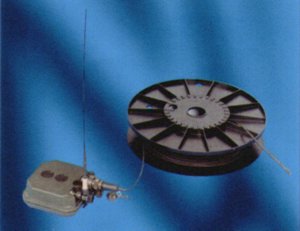
Photo 12. Mobile video surveillance complex
for perimeter protection
by GPS Standard (Italy)
Conclusion
It is obvious that rapidly deployable perimeter systems are characterized by their specific features, determined by the peculiarities of their application.
Here it is impossible to single out any one system that could be considered the best and most universal.
Quickly deployable autonomous complexes should provide wider opportunities for flexible configuration of equipment directly at the facility than traditional “stationary” systems.
They should be more economical and portable than stationary ones.
They are often subject to higher requirements for the concealment of components.
At the same time, it is very important that a quickly deployable autonomous system is easy to install and configure and does not require highly qualified personnel for maintenance.
The systems described above meet the listed requirements to a greater or lesser extent. However, when selecting and designing rapidly deployable or autonomous security systems, it is necessary to take into account many factors — terrain, facility topography, surrounding natural conditions, industrial interference, organization of the security service, etc.
System integrators must not only be well versed in the variety of systems produced, but also closely monitor technical progress in this dynamically developing area of security technologies.
Literature
1. Vvedensky B.S. Modern perimeter security systems.//Special equipment, 1999, No. 3, pp. 24-29, No. 4, pp. 34-41, No. 5, pp. 39-46.
2. Vvedensky B.S. Perimeter security systems at the IFSEC’2000 exhibition.//Special equipment, 2000, No. 4, pp. 2–9, No. 5, pp. 2–12.
3. Vvedensky B.S. Review of the IFSEC’2000 exhibition.//Special equipment, 2001, No. 3, pp. 74–80, No. 4, pp. 56–64.
4. Larin A.I. Rapidly deployable security systems.//Special equipment, 2000, No. 4, pp. 10–15
5. Vvedensky B.S. Perimeter Security Equipment, Moscow, “World of Security”, 2002. 112 pp. with ill.

Добавить комментарий